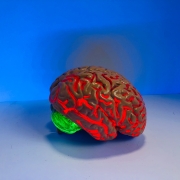Synthetic Cathinone and Cannabinoid Designer Drugs Pose a Major Risk for Public Health
As part of an increasing worldwide use of designer drugs, recent use of compounds containing cathinones and synthetic cannabinoids is especially prevalent. Here, we reviewed current literature on the prevalence, epidemiology, bio-behavioral effects, and detection of these compounds. Gender differences and clinical effects will also be examined.
Chronic use of synthetic cathinone compounds can have major effects on the central nervous system and can induce acute psychosis, hypomania, paranoid ideation, and delusions, similar to the effects of other better-known amphetamine-type stimulants. Synthetic cannabinoid products have effects that are somewhat similar to those of natural cannabis but more potent and long-lasting than THC. Some of these compounds are potent and dangerous, having been linked to psychosis, mania, and suicidal ideation.
Novel compounds are developed rapidly and new screening techniques are needed to detect them as well as a rigorous regulation and legislation reinforcement to prevent their distribution and use. Given the rapid increase in the use of synthetic cathinones and cannabinoid designer drugs, their potential for dependence and abuse, and harmful medical and psychiatric effects, there is a need for research and education in the areas of prevention and treatment.
Read this open access article in full AT THIS LINK.







